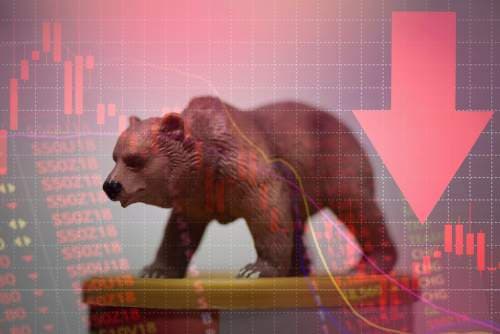
“A breakdown occurs. The crack-up boom appears. Everybody is anxious to swap his money against ‘real goods’, no matter whether he needs them or not, no matter how much money he has to pay for them.”
— Ludwig von Mises, Human Action
July 29, 2025 — Man is rational, but not always and never completely. In fact, he makes his most important decisions with little resort to reason.
That is, he chooses his mate, his career, and his lifestyle on the basis of what appeals to him, using his heart, not his head. And no matter how reasonable he thinks he is, he still gets carried away by emotion from time to time.
In markets as in politics, he is a fool as often as not — driven by whatever emotion that has taken hold at that moment — fear, greed, wanton confidence, disgust, the desire for revenge, bonhomie. . . . But markets and politics are even more subject to delirium because they involve large groups of people.
And one of the major achievements of modern technology was that it made the mobs larger than ever before.
The madness of crowds has two important features:
First, crowds can only know things in their crudest, most dumbed-down form.
Since the truth is infinitely complex, it follows that what a crowd thinks is almost always reduced to a point where it is more lie than truth.
Second, though the same emotions beset individuals as well as crowds, a man on his own rarely causes much trouble.
He is restrained by family, friends, and the physical circumstances. A crowd, on the other hand, so magnifies his emotions and so corrupts his ideas that soon the whole society is on its way to hell.
The particular road to hell on which Americans were embarked at the debut of the twenty-first century was a feature of their own unique situation.
A half-century of economic progress and a 25-year bull market had led them to believe things that were not true and to expect things that they were not likely to get.
Never in the history of man had any people been able to get rich by spending money . . . nor had investment markets ever made the average buy-and-hold investor rich . . . nor had paper money, unbacked by gold, ever retained its value for very long.
In the late 1990s, however, all these things seemed not only possible, but inevitable. Everything seemed to be going in Americans’ favor. Then, suddenly, at the beginning of this new century, everything seemed to be going against them.
How could US consumer capitalism, which had been phenomenally successful for so long, fail them now? It can’t, they will say to themselves. Why should they have to accept a decline in their standards of living, when everybody knew that they were getting richer and richer? It cannot be.
Besides, said Americans to themselves in early 2003, if there were problems, they must be the fault of others: terrorists, greedy CEOs, or policy errors at the Fed.
There was nothing wrong with the system, they assured themselves. Americans cannot turn back from the promise of something for nothing. It would be too reasonable . . . too sensible . . . too humble.
Yes, the administration could cut expenses. It could renounce its worldwide gendarme role, for example, and return to defending the nation. Large spending cuts would enable the government to balance the budget and still give citizens a tax cut.
And yes, people could cut their own expenses and begin saving 10% of their earnings, as they did in the 1950s and 1960s. The trade deficit would be eliminated, and debts could be paid off. And yes, the dollar could probably be saved too.
Maybe it would be marked down a bit, but a stern “strong dollar” policy (perhaps bringing Paul Volcker out of retirement to give it credibility) might arrest its decline.
After a difficult recession — in which stocks have been marked down and living standards reduced—the US economy might recover and rest on a firmer foundation of domestic savings.
As we will see, that is why Americans’ borrowing actually went up after the first recession began in 2001; as joblessness increased, Americans mortgaged more and more of their houses and bought new cars at a record rate.
And it is why the US federal government actually increased its spending — and its deficits (enormously) — after its tax revenues began to collapse early in the new century.
And it is why the trade deficit grew larger and larger — even as the dollar fell. By the beginning of 2003, the entire nation — its stocks, its currency, its military, and its consumers — seemed hell-bent.
Regards,
Addison Wiggin
Grey Swan Investment Fraternity
P.S., This essay is an excerpt from the third post-pandemic edition of Financial Reckoning: Memes, Manias, Booms & Busts, Investing in the 21st Century.
Today’s animal spirits and a mad crowd of Americans looking to strike it rich on Wall Street are nothing new. This time around it’s the promise of AI… in the past it was railroads, radio… new tech during the space race… even home mortgages in 2008.
Since the first version of the book went out, I’ve had to revise it to reflect the Global Financial Crisis of 2008… and again for the impact of 2020’s Pandemic.
Turning to our reader email – which we continue to get and read – regular contributor Basil notes regarding yesterday’s essay:
Thanks for your very thoughtful and sobering missive to start the week.
Indeed, the (economic) storm clouds are everywhere but folks are doing some big-time cognitive dissonance. Cue, the Bobby McFerrin, soundtrack.
Thanks!
A sobering look at the markets is likely what the doctor would order, if he were looking at all the macro data at our disposal. Please, watch the replay before the next Swan Dive tomorrow morning.
Your thoughts? Please send them here: addison@greyswanfraternity.com



